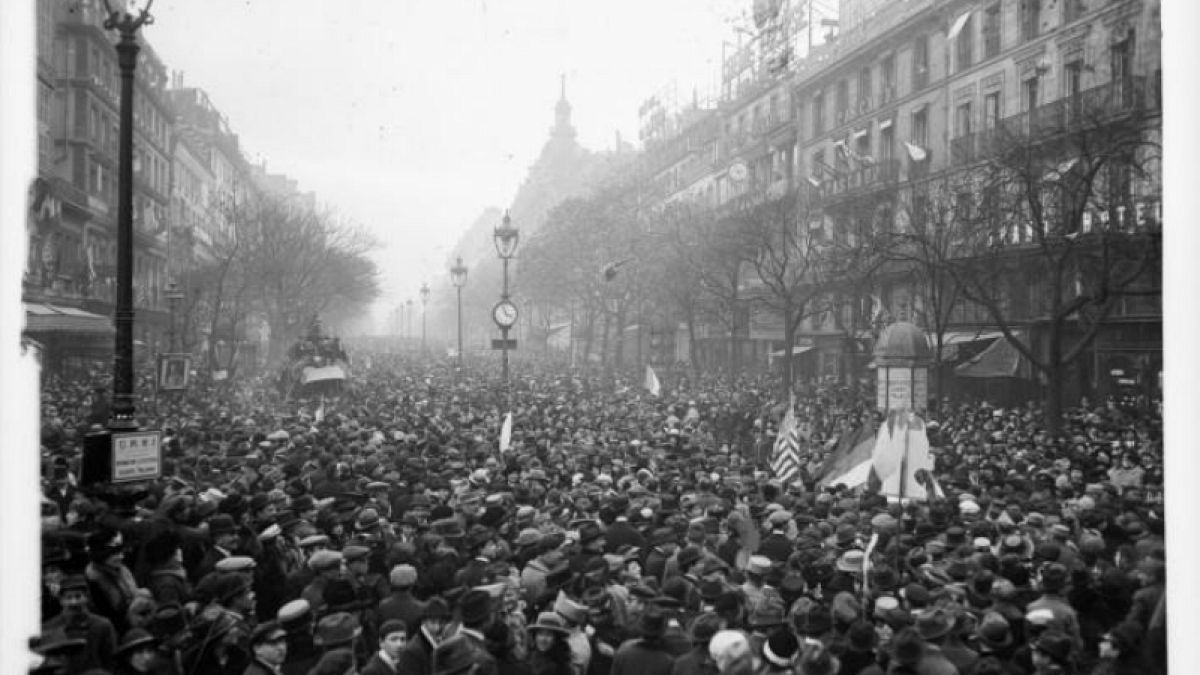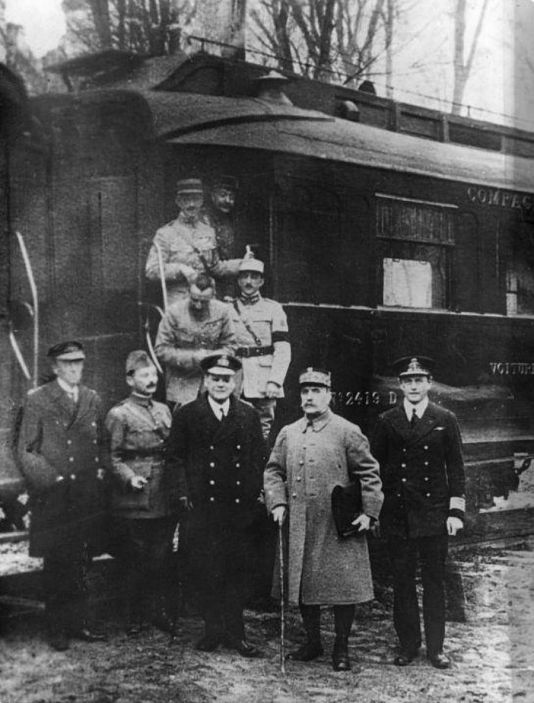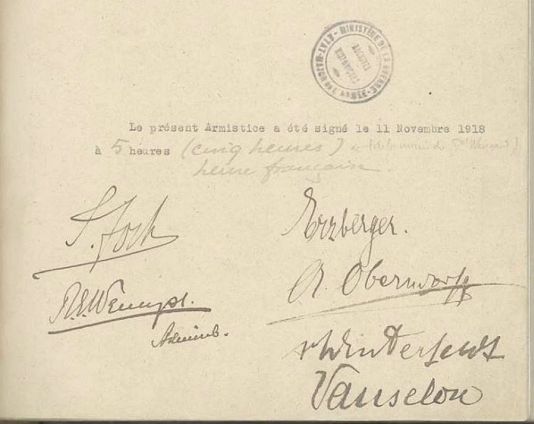While the end of World War I brought relief to many, it also set in motion economic and ideological changes, many of which still reverberate today.
While the end of World War I brought relief to many, it also set in motion economic and ideological changes, many of which still reverberate today.
Some argue the Great War accelerated women's emancipation but it also resulted in substantial numbers of deaths and injuries.
Strangers on a train
On November 11, 1918, at 5.15 am, the armistice was signed in a train carriage — the private lounge of French Marshal Ferdinand Foch, supreme commander of the Allies — that was stationed in the Rethondes clearing of the Compiègne forest, 100 kilometres north of Paris.
The location was deliberately chosen as it was isolated, especially from the press, to carry out the delicate negotiations.
A full version of the document can be consulted on the website for the French Ministry of Defence's history department.
In addition to Marshal Foch, German State Minister Mathias Erzberger, Count Alfred von Oberndorff, a German diplomat, German Navy Captain Ernst Vanselow, General Detlof von Winterfeldt and British Admiral Rosslyn Wemyss all signed the document.
Representatives of the Allies and Germany agreed to cease hostilities by 11 am. In the final hours of the war, soldiers continued to die, often due to the actions of officers who already knew that the armistice had been signed.
The death of Augustin Trébuchon is one such tragic case — he was shot in the head at 10.50 am and is thought to be the last French soldier killed in the war. The American Henry Gunther is officially considered the last person to have died.
An estimated 2,500 soldiers died between the moment the armistice was signed and the moment the ceasefire came into force.
Relative peace did not materialise until the Treaty of Versailles was signed in June 1919.
A remodelled Europe
The Armistice of November 11, 1918 spelt the end of the German Empire — the Ottoman Empire and the Austro-Hungarian Empire were also eliminated from the war by previous armistices.
In 1924, the changes brought about by the war along with agitation brought about by the Bolshevik Revolution paved the way for the creation of most modern democratic states but this was not without some challenges.
Some of them, such as Yugoslavia, would again disintegrate years later. After German withdrawal, the term "Baltic states" came to refer to countries by the Baltic Sea that had gained independence from Russia in its aftermath.
Finland proclaimed its independence from the Soviet Union, while Poland obtained its independence when Germany fell and Czechoslovakia was born but dissolved in 1993.
The great powers traced lines across Africa and Oceania to divide up the German Colonial Empire, creating territorial conflicts that resonate in the present day.
The huge conglomeration of territories and peoples that formerly comprised the Ottoman Empire was divided into several new states.
The first 'industrial war'
Like in all wars, both sides used all resources available to them to maximise fatalities.
However, during World War I, the Industrial Revolution was booming and before this, technologies were not as effective at killing, injuring and poisoning soldiers and civilians. It was the first "industrial war" on a global scale.
Soldiers trapped in the trenches of northern France and Belgium were used as guinea pigs to test increasingly sophisticated weapons.
In four years, 1.3 billion shells were used. On April 22, 1915, in Ypres, Belgium, the Germans tested a new weapon — chlorine. As many as 5,000 French soldiers suffocated to death.
Then the colourless gas phosgene was "tested", which kills several hours after it is inhaled. After this, in 1917, the Germans started using mustard gas, which they "tested" in Ypres.
It is estimated that 20,000 soldiers lost their lives because of deadly gases.
In countries like Serbia, 16% of the population died. Deaths were also high in the Ottoman Empire and Romania enlarged its territory but at great cost.
It is estimated that 16,543,185 people lost their lives during WWI, according to calculations from the Robert Schuman Center. Other sources put the number much higher than this at 18 million.
Such was the effectiveness of the weapons employed during the Great War that more than 21 million people were left wounded and disfigured.
In the midst of the joy surrounding the armistice, another war broke out in the autumn of 1918. A silent killer that spread rapidly throughout the world: the so-called "Spanish flu" virus, although its origins may have been in China or among American soldiers. It took the lives of between 50 and 100 million people — between 2.5 and 5% of the world's population.
Many authors think the pandemic was given this name because only Spain, neutral during the Great War, spoke without censorship about what was happening.
Global mobilisation
Tragically, the number of victims is not surprising when one considers the number of soldiers that took part: France mobilised 8 million soldiers (including 600,000 from French colonies), the German Empire 13 million, the United Kingdom 9 million (1.4 million from English colonies) and the Russian Empire 13 million soldiers.
The war that emancipated women?
Women could not vote but played a vital role in the war as most men fit to serve were on the front lines. World War I marked the beginning of the emancipation of women.
Out of sheer necessity, women from the warring countries were allowed access to jobs which they previously didn't do. They worked manufacturing weapons, like British munitionettes, but also in banks, in transport and agriculture.
British and American women obtained the right to vote after the war, but in other countries like France or Italy, they had to wait much longer.
When the soldiers returned home not all women returned to being housewives but their entry into the labour market also saw them faced with discrimination and wage inequality — issues that remain unresolved to today.
Euronews' special coverage of World War I Armistice commemorations continues throughout the week on euronews.com. On Sunday, November 11, we bring you live updates of ceremonies around Europe.




